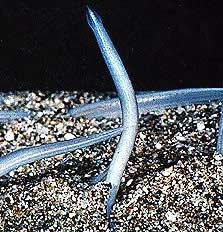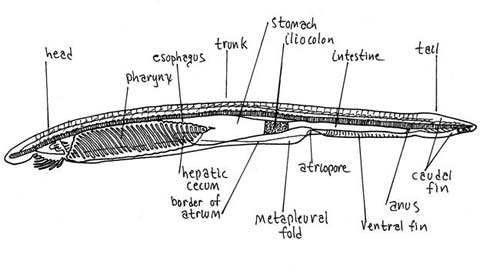The lancelet is a rare animal, with scientists discovering that it has existed for about 500 million years, retaining primitive traits to this day. It serves as a living proof for studying the origins and evolution of invertebrates.
 |
(Photo: biol.paisley) |
The lancelet measures 3-5 cm in length, exhibiting a very unusual morphology. It has a long, flat body with pointed ends resembling a yoke. Its entire body is a translucent pinkish color, allowing for a clear view of the parallel muscle fibers arranged vertically. The lancelet has no scales, fins, or backbone; its internal organs consist of a complex tube that rhythmically contracts. It lacks sensory organs such as eyes, nose, or ears, and there is no differentiation in the digestive system apart from the mouth and throat, which lead directly to the anus.
Lancelets typically swim into estuarine areas during tidal waters in shallow seabeds. They have minimal self-defense capabilities but can burrow into the sand. Their lifespan is approximately 3-4 years, during which they often bury half their bodies in the sand, leaving the other half exposed to catch plankton carried by the river.
During the breeding season, lancelets pair off and emerge from the sand to swim together and mate. Males and females remain distinct, with their mature reproductive cells released into the water for external fertilization. By the following morning, the fertilized eggs develop into freely swimming larvae. In three months, they grow into larger lancelets, but their reproductive systems do not fully mature until one year later.
Biologists believe that lancelets represent a transitional evolutionary stage from invertebrates to vertebrates, serving as ancestors to fish, yet they are not classified as fish themselves. They hold a unique position in the evolutionary history of animals.

Structure of the Lancelet – Amphioxus (Photo: lander)




















































